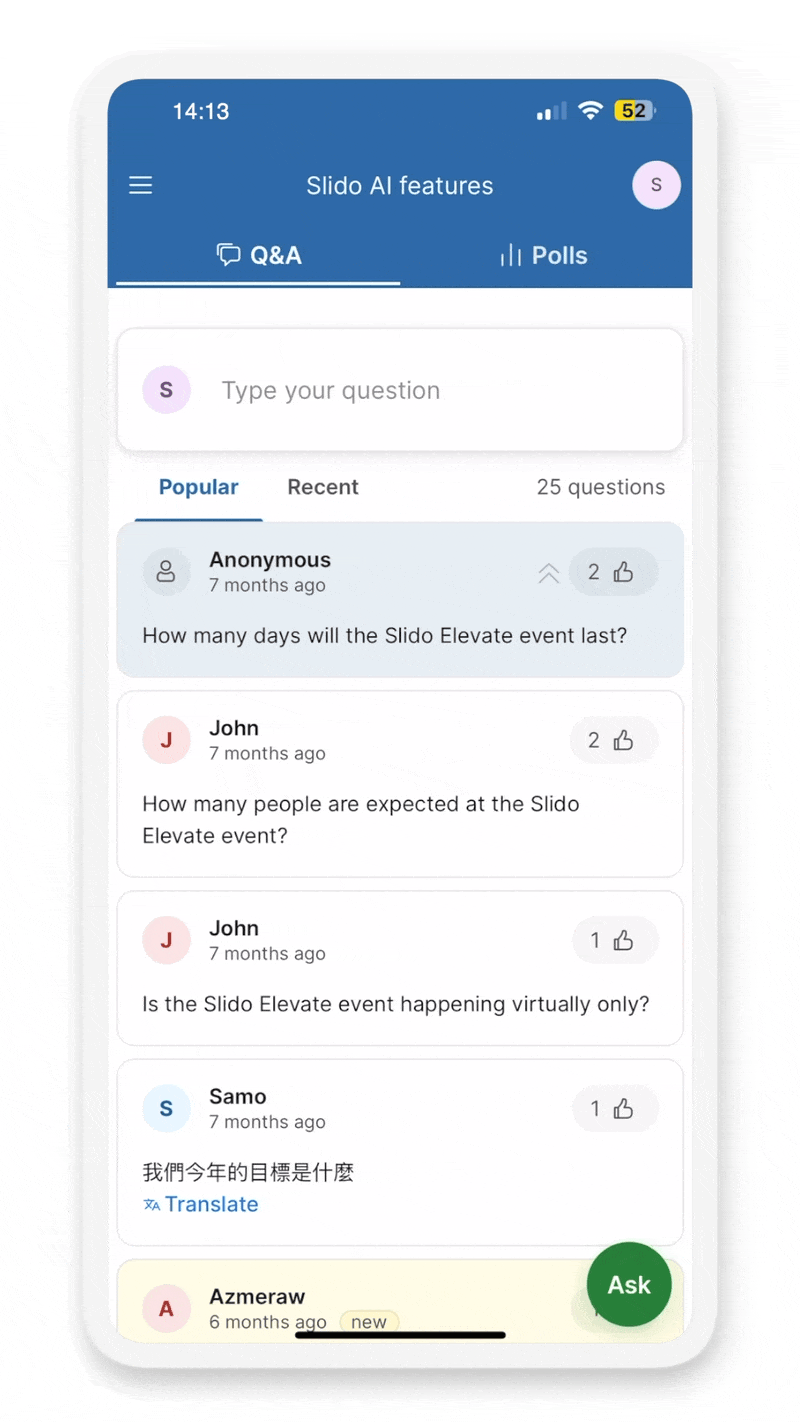Question AI enhances how participants interact with Slido Q&A. It offers assistance in refining, shortening, and generating alternative versions of their questions. It’s designed to optimize clarity by encouraging concise, clear, and well-written Q&A submissions.
Learn more about Slido’s use of AI in our AI Transparency Note.
Question AI is available for all Slido plans. However, it can only be disabled by owners and admins of paid annual Slido plans. See our AI Settings guide for more details.
In this article:
How to use Question AI
Question AI activates as soon as a participant begins typing their question.
- Begin typing a question as a participant and notice the panel with the available functions activate
- Choose your modification option and then select Apply, Cancel, or Try again
- After choosing Apply, you can still go back and edit the question before submitting

The feature is designed to work best in English but other languages are also supported. Keep in mind, though, that sometimes a question in a foreign language can be paraphrased and translated into English.
Available functions/tones
| Improve | Fixes grammar errors and paraphrases into a well-formed, concise question |
| Shorten | Shortens the question under the character limit while preserving its meaning |
| Professional | Formal language appropriate for professional settings; vocabulary tends to be more complex |
| Casual | As if you were to speak to a friend; contains occasional slang or shortcuts. |
| Joyful | Excited and enthusiastic tone, often including positive emojis. |
Known Limitations
- All suggested edits are generated by a Language Model which includes two content filtering systems (one embedded within the model and another provided by Azure). However, there can still occasionally be inaccurate, biased, or potentially harmful responses produced.
- Non-English questions may or may not be translated into English.
Security and Privacy
PII Scrubbing:
Our system includes a PII scrubbing mechanism to ensure that any personally identifiable information is removed from the input before processing. This process is crucial for maintaining the privacy and security of your data.
Content filtering:
To protect against inappropriate or harmful content, our system uses Microsoft’s Azure OpenAI which contains a rigorous content filtering system that filters content of various types (violence, sexual, self-harm, etc) across multiple levels of severity (safe, low, medium, high). More details can be found in Microsoft’s documentation.
We want to hear from you!
Share your feedback with us and let us know how we can improve these features. And if you have ideas of how we can utilize AI even further within Slido, you can let us know that, too!
Curious about more?

